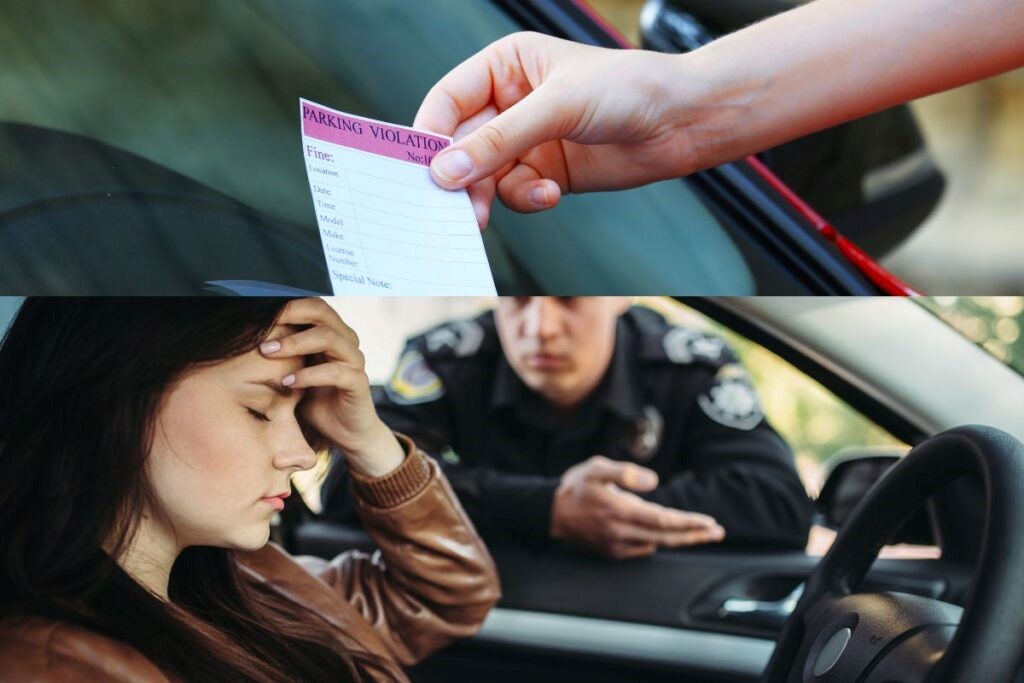When it comes to the legal realm, understanding the differences between traffic violations and criminal…
The Difference Between Primary and Secondary Traffic Violations – Guest Post

Understanding the difference between primary and secondary traffic violations is not just a matter of legal knowledge; it is a crucial aspect of your driving experience. Whether you’re a seasoned driver or just starting out, knowing these distinctions can help you navigate the roads safely and avoid unnecessary trouble.
The traffic offense lawyers at Patituce & Associates or other law firms are a great choice if you’re accused of a primary or secondary traffic violation.
This article explains the differences between primary and secondary traffic violations.
Understanding Primary and Secondary Traffic Violations
Primary traffic violations are serious offenses that harm public safety or violate traffic laws. These violations, which include speeding, running red lights, or driving under the influence, are not taken lightly by law enforcement. They can pull you over and issue a ticket for a primary violation if they witness you committing the offense.
On the other hand, secondary traffic violations conform to administrative or regulatory aspects of driving. These violations don’t threaten public safety; you can quickly address them to ensure smooth traffic flow and strict adherence to laws.
Examples of secondary violations include expired registration tags, broken taillights, or failure to signal when changing lanes. These infractions may not seem as serious as primary violations, but they can still result in fines or penalties if ignored.
Now, let’s have a closer look at the differences:
Key Differences between Primary and Secondary Traffic Violations
1. Nature of Violation
- Primary Violations: These infractions endanger public safety or violate fundamental traffic laws. They typically involve speeding, running red lights, or driving under the influence.
- Secondary Violations: Secondary violations are related to administrative or regulatory aspects of driving. They don’t pose an immediate threat to public safety but must be addressed to ensure adherence to laws and smooth traffic flow.
2. Enforcement
- Primary Violations: Law enforcement officers are crucial in maintaining road safety. They can pull you over and issue a ticket for a primary violation if they witness you committing the offense. These violations are usually dealt with more severely due to their direct impact on safety, ensuring that our roads remain secure for all.
- Secondary Violations: While secondary violations also require enforcement, they may be addressed through citations or warnings during routine traffic stops or checkpoints. They are often considered less urgent, but they still carry consequences if ignored.
3. Severity of Consequences
- Primary violation: Ignoring primary violations can have significant consequences, including penalties, fines, license suspensions, or even criminal charges for severe offenses like driving under the influence. It’s important to remember that these are not just traffic violations; they are serious offenses that can have a lasting impact on your life.
- Secondary Violations: Although secondary violations may seem less severe, they can still lead to fines or penalties. It’s important to remember that repeated or unresolved secondary violations can accumulate, potentially impacting your insurance premiums. This underscores the need for responsible driving and prompt resolution of any infractions.
4. Impact on Public Safety
- Primary Violations: These violations directly jeopardize the safety of everyone on the road, making them a top priority for law enforcement and traffic safety initiatives.
- Secondary Violations: While not as immediately hazardous, secondary violations still play a role in maintaining overall traffic safety and order. Addressing these infractions helps uphold regulatory standards and contributes to smoother traffic flow.
5. Intent and Impact
- Primary Violations: These infractions often involve deliberate actions or behaviors that endanger others on the road. For example, speeding or running a red light poses an immediate safety risk.
- Secondary Violations: In contrast, secondary violations may occur due to oversight, neglect, or minor vehicle malfunctions. While they still need attention, they typically lack the deliberate intent to endanger others.
6. Legal Classification
- Primary Violations: Primary violations fall under the classification of misdemeanors or more severe offenses under traffic laws. They often carry heavier penalties and may result in points on the driver’s record.
- Secondary Violations: Secondary violations fall under the classification of infractions or non-criminal offenses. While they still require resolution, they are generally treated with less severity under the law.
7. Frequency of Enforcement
- Primary Violations: Law enforcement officers prioritize identifying and addressing primary violations due to their immediate threat to public safety. Patrols, checkpoints, and surveillance cameras often target these offenses.
- Secondary Violations: Enforcement of secondary violations may be more sporadic or occur during routine traffic stops. Officers may use discretion in deciding whether to issue citations or warnings for these infractions.

8. Educational Opportunities
- Primary Violations: Primary violations are usually severe and may trigger mandatory attendance at traffic schools or educational programs as part of the penalty. These programs aim to promote safer driving behavior and prevent future offenses.
- Secondary Violations: While not typically associated with mandatory educational measures, addressing secondary violations can still provide opportunities for drivers to learn about proper vehicle maintenance, regulatory compliance, and safe driving practices.
9. Insurance Implications
- Primary Violations: Insurance companies often view primary violations as indicators of higher-risk behavior. As a result, drivers may face increased insurance premiums or even policy cancellations following these offenses.
- Secondary Violations: While secondary violations may not significantly impact insurance premiums, repeated infractions or a pattern of non-compliance can still lead to higher rates or policy adjustments over time.
The Wrap-Up!
In conclusion, understanding the difference between primary and secondary traffic violations is vital for all drivers. Primary violations directly endanger public safety and are dealt with a grave concern. On the other hand, secondary violations relate more to administrative aspects of driving but still require attention.


 5.0 stars Posted by Mary June 30, 2016
5.0 stars Posted by Mary June 30, 2016